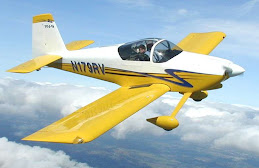Completed match-drilling of top right wing skins. Cut and edge-prepped J channel stringers for both wings. Match-drilled J-channels to right wing skins. Installed bottom skins and match-drilled. Dissassembled right wing. Deburred right wing ribs.


You get 4 lengths of J channel stock in the kit, each long enough to produce the longer outboard stringer. If they made them just a little longer, you could get two of the shorter inboard stingers out of the same length and then they would only have to supply three; unusual for Vans not to have spotted that possible economy.
Fitting is quite simple, though in my small workshop, I had to lift one end of the wing off the stand and move it so that it was pointing towards the open door and then, with the other hand, slide the longer stringer into its place, beginning with one end out through the door. Even with lots of clecos on board, the wing is light enough that this did not count towards my quota of exercise for the day.
The outboard end of the outboard stringer is clamped flush with the edge of the outboard W-903 skin but it is not clear from the instructions wheter the inboard end of the inboard stringer is similarly set flush with the edge of the W-902 inboard skin or with the inboard W-910 rib. The manual says "Clamp the W-926A inboard stringer in place at the W-910 inboard rib, locate it and drill to the skin" which seems ambiguous to me. I went with flush to the edge of the skin on the basis that I can cut it back. However, this leaves me with less overlap. If I am wrong, I could put some extra rivets through both stringers (but not the skin) along the overlap to strengthen the join or I could use some scrap to make a third layer to extend the overlap. Most likely, I will just leave it, even if I have to cut the stringer back to the inboard rib.
I used a small clamp on the stringers at the overlap to make sure they were lying tight together before I began to drill. I pulled out a new drill bit for this operation as I wanted to cut the holes with the minimum of feed pressure on the drill. The line was visible in the centre of all holes as soon as the two end holes were lined up. This required the stringer to be placed tight against the aft edge of the slots in the ribs, but the 'curl' of the J section seems to be perfectly centred in the cut-outs at that position. I would have preferred to work from the centre out but, this being impossible, I worked from both sides inward,, using a line of 6-8 clecos in the holes immediately preceding the one I was drilling and moving them along as I worked. I left a cleco in place at each rib as I passed.
 The bottom skins went on without drama. I had to take off the top skins so that I had enough clecos Both leading edges are still clecoed at this point. These two, together with one set of skins, use my full stock of 300 3/32 clecos. In fact, I could do with another dozen so that the bottom skins could be clecoed in every 4th hole all over.
The bottom skins went on without drama. I had to take off the top skins so that I had enough clecos Both leading edges are still clecoed at this point. These two, together with one set of skins, use my full stock of 300 3/32 clecos. In fact, I could do with another dozen so that the bottom skins could be clecoed in every 4th hole all over.After match-drilling, I took the wing apart and deburred the ribs. If I had followed the Vans sequence, the wing skeleton would be primed and riveted at this point and I would have had to debur and dimple the ribs while assembled. My way is definitely easier and I believe (hope) that the assembly with clecos is firm enough to properly match-drill the skins.



No comments:
Post a Comment